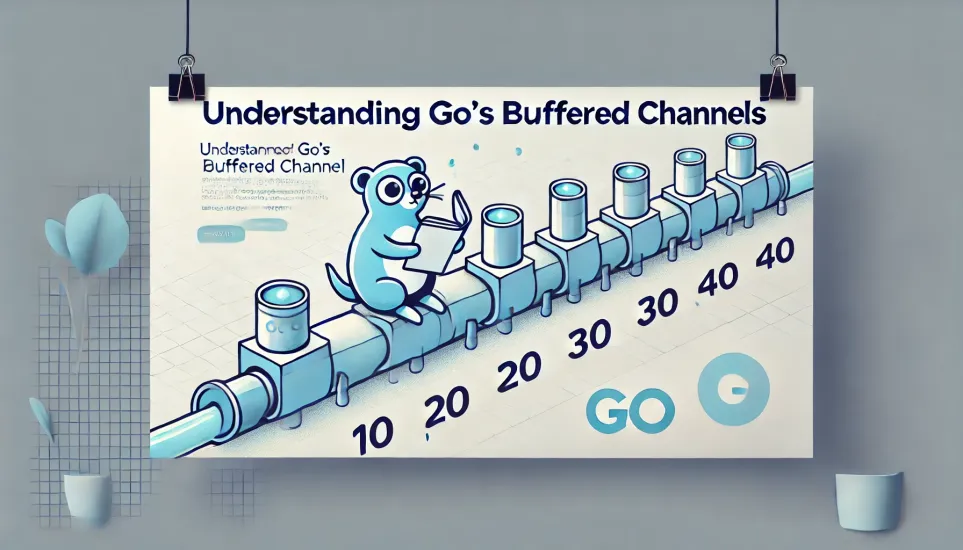Channels are one of the core concurrency tools in Go. In this blog i.e Understanding the Golang Channel, we’ll explore buffered channels through a practical example, analyze their behavior in the best and worst-case scenarios, and provide answers to frequently asked questions (FAQs).
Will It Panic? Code Example:
Let’s consider a new example to illustrate the working of buffered channels with at least four values:
What Happens Here?
- Buffered Channel Initialization:
ch := make(chan int, 4)creates a buffered channel with a capacity of 4. This means the channel can store up to 4 values without blocking the sender.
- Sending Data:
- Values
10,20,30, and40are sent to the channel one by one without blocking, as the buffer has enough space to hold them.
- Values
- Receiving Data:
- The
for value := range chloop reads values from the channel in the order they were sent. It stops when the channel is closed and all values are processed.
- The
- Channel Closure:
- The channel is closed after all values are sent, signaling that no further data will be sent to the channel.
Output of the Code
Complexity Analysis
Best Case:
- Time Complexity: O(n), where
nis the number of values sent to the channel. All values are processed without blocking. - Space Complexity: O(buffer size), for storing values in the channel buffer.
Worst Case:
- Time Complexity: O(n + k), where
kis the delay caused by blocked sends due to a full buffer. - Space Complexity: O(buffer size), as the channel buffer remains full until the receiver processes values.
FAQs on Buffered Channels in Go
1. What is the difference between buffered and unbuffered channels?
- Buffered channels can hold values in their buffer without blocking the sender immediately.
- Unbuffered channels require the sender and receiver to synchronize for data transfer.
2. What happens if I send a value to a closed channel?
- Sending a value to a closed channel causes a panic. Always close channels from the sender’s side and avoid sending to a closed channel.
3. Can I close a channel multiple times?
- No, attempting to close a channel more than once results in a panic.
4. What happens if I range over an open channel?
- If the channel is not closed, the
rangeloop blocks indefinitely, waiting for new values.
5. Can the buffer size of a channel be dynamic?
- No, the buffer size must be fixed during the channel creation with
make(chan int, size).
Best Practices for Using Channels
- Avoid Closing Channels Multiple Times:
- Always close channels from the sender’s side and only once.
- Use Buffered Channels for Decoupling:
- Buffered channels are useful when the producer and consumer operate at different speeds.
- Close Channels Gracefully:
- Always close channels to signal completion when no more values will be sent.
Edge Cases to Consider
- Overfilling the Buffer:
- If the buffer is full and no receiver is ready, the sender will block until space becomes available.
- Empty Channel:
- Reading from an empty, open channel blocks until a value is sent.
- Panic from Improper Closure:
- Improperly closing a channel or sending values to a closed channel can lead to a panic.
Takeaways
- Buffered channels provide a flexible way to handle communication between goroutines.
- Proper channel closure is crucial to avoid panics.
- Understanding best and worst-case complexities can help optimize channel usage in real-world scenarios.
Happy coding!




